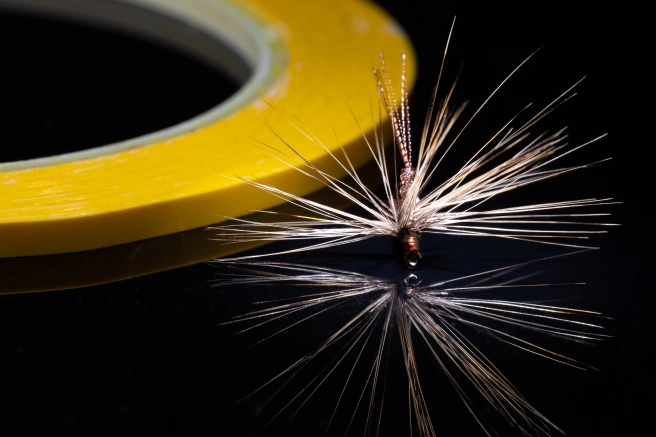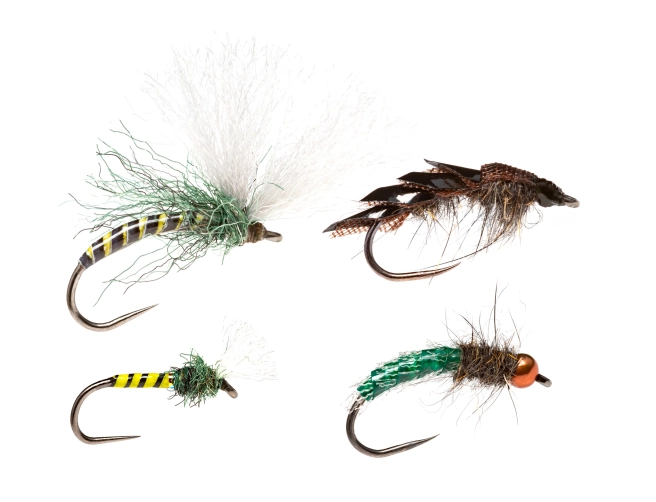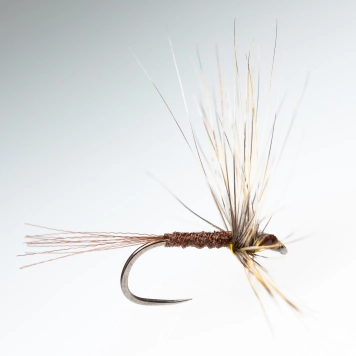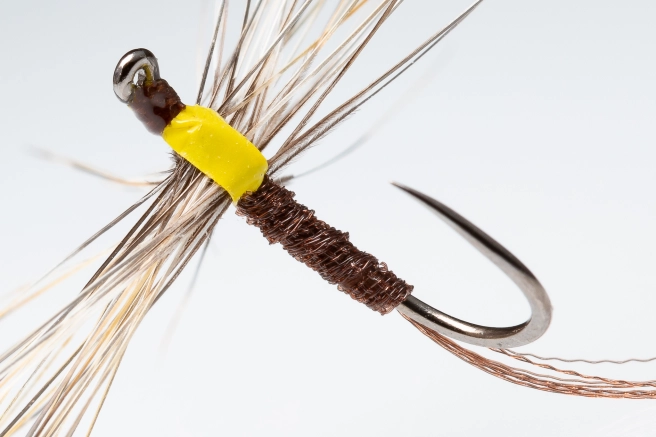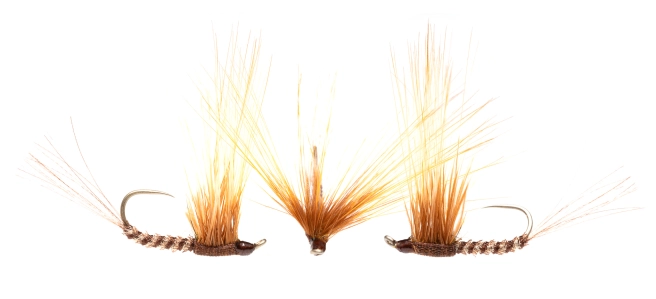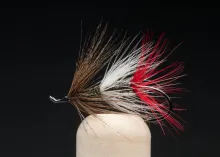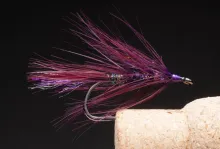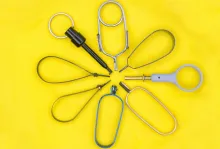A simple technique to fan out dry fly hackles to form wings the Comparadun style.
I have to thank Bill Ninke for giving me the inspiration for this one. We both have an R&D background which probably explains our shared interest in exploring novel tying materials and methods which we discuss on a regular basis by email. Bill writes the fly of the month page for the central New Jersey chapter of Trout Unlimited and the fly he picked for November 2022 is one that uses a technique I’d not seen before.
The Hackle Wing Baetis Dun has a Comparadun fan shaped wing, formed not from deer hair as is standard, but from a modified wound hackle. To form the finished wing the wound hackle fibres are pulled to the top of the hook and a heated needle applied to the underside to set them in place. Bill’s article gives the history of the method, together with comprehensive tying instructions.
I used to fish deer hair Comparaduns, I liked them, they sat nicely on the water and caught a lot of fish. It been a good while since I tied one; developing an allergy to deer hair put paid to that. I can still tie a few flies with hackles, and by a few, I mean just two or three, before my eyes start to water and itch and I have to stop. So, having read Bill’s article, I got to thinking of other ways of achieving a Comparadun shape wing from a wound hackle.
One of the things that I have in my miscellany of materials is sticky plastic whiteboard tape. It’s the stuff people use to layout grids on whiteboards so they can use dry marker pens and clean off the board without removing the lines. The tape is 3 mm/0.12 inch wide and 0.08 mm/0.003 inch thick and comes in a number of colours. I’ve used it for a number of fly designs to create different body effects. It’s available from a number of online sources; just Google ‘3mm whiteboard tape’.
For large size flies the 3mm tape can be used as it comes, for smaller flies stick a bit of tape to a cutting mat and use a craft knife and steel ruler to cut it to a narrower strip. On the size 14 Sling Wing shown here I cut the tape to 2mm wide.
I’ve given the materials and tying instructions for a March Brown approximation with an organza body and tails. However, the tape sling method could be applied to any hackled dry fly with a dubbing or quill body, hackle fibre or microfibbet tails, or anything else you like to use.
When the fly is finished the tape sling lies flat under the thorax holding the hackle fibres out at ninety degrees to the hook forming the fan shaped wing. The resulting fly will sit flat on the water, and unlike a dry fly with a hackle that has been trimmed underneath, the sling wing still has all of its fibres to keep it afloat.
On larger flies 3mm organza ribbon can be used for the sling to good effect. The mayfly below is tied on a #12 3x long hook using brown and cream organza for the body and tails. On this variant I tied in the organza sling on the top of the hook to produce an inverted wing. I know that some fly anglers like this style of wing which makes the fly float with the point out of the water so (maybe) the fish don’t notice it. Others will say it doesn’t make any difference and that in any case tying an inverted wing inside the hook is a pain. Literally, if you catch a finger on the hook point.
With the sling wing method tying an inverted wing is actually easier than an upright one as you are not working inside the hook bend. Simply tie the body and tails followed by a strip of 3mm ribbon hanging back over the abdomen, wind your hackle, stroke the fibres down and pull over the ribbon. Tie in, trim off the waste, finish the head and you’re done.
So, standard or inverted wing? The choice is yours, for a standard wing tie in the sling under the hook, for an inverted wing put the sling on top. Wind the hackle, separate and apply the sling. Simple.
- Log in to post comments

